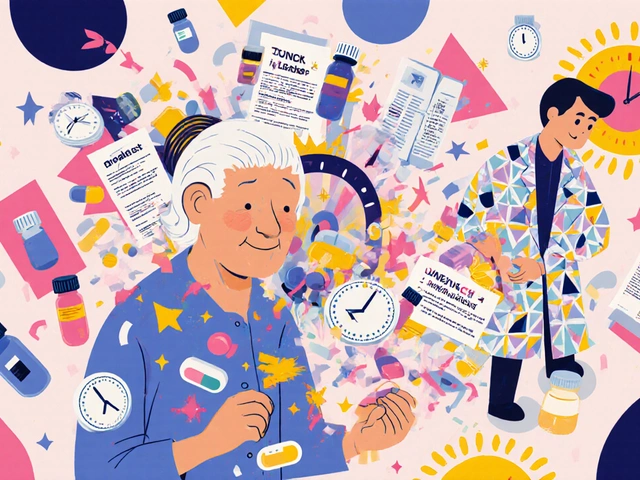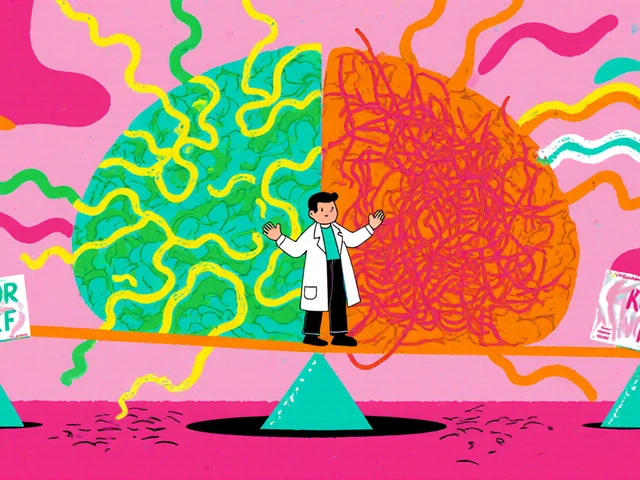Calf hurting like you just ran a marathon, but you didn’t? Feeling out of breath going up just a single flight of stairs, even though you could have done three pre-surgery? Those weird symptoms most folks shrug off after surgery can be your body waving big, red warning flags. Blood clots sneak up fast, especially once anesthesia wears off. Let’s talk straight about what to look for, what’s normal, and when to make some noise for your own safety.
The Reality of Blood Clots After Anesthesia
So why do clots even appear after surgery? When you’re under general anesthesia, your body takes a break – muscles don’t move, blood moves slower, and you’re probably not drinking water as much either. Add in the stress from surgery and recovery time where you’re not as active as usual, and the risk of one of these clots forming goes way up. Surgeons and nurses absolutely know this, which is why you’ll see those puffy leg sleeves or be handed compression socks and get told to wiggle your feet every few hours.
But here’s the kicker: clots can show up days or even weeks after discharge. The most common type is a deep vein thrombosis (DVT), which usually hides out in your lower legs. When blood pools or gets a little too sticky, clotting happens—and if that clot snakes loose, it can move up to your lungs, block off blood flow, and cause life-threatening trouble (pulmonary embolism, or PE).
There’s some hard data to back this up. Studies show that up to 1 in 100 people who’ve just been through major surgery could face a DVT within three months. The risk gets bigger if you have some extra pounds, smoke, have had clots before, or are dealing with cancer. Even young, otherwise healthy folks aren’t off the hook if they’re on birth control, pregnant, or just unlucky genetically.
Let’s put those numbers in perspective with a quick table:
| Risk Factor | How Much Risk Increases |
|---|---|
| Major surgery under general anesthesia | 2-5x baseline risk |
| Obesity | 2x |
| History of DVT/PE | Up to 5x |
| Active cancer | 4-7x |
| Immobility for over 3 days | 3x |
You see the numbers... but the trick is to not get hung up on statistics. The real key is watching for the signs your body gives you post-op, especially when anesthesia has made everything feel fuzzy for a few days.
Spotting Blood Clot Red Flags: Symptoms You Can’t Ignore
Everyone hears about the usual aches and swelling after surgery. So how do you tell a normal, sore leg from something that needs a call to the doctor? The truth: blood clot symptoms usually show up a little differently. Most people get a DVT in one leg only. If you look at both legs, and one is suddenly a different color, feels warm or hard, or looks puffy compared to the other—that’s your first clue. The classic sign is a deep, crampy calf pain that usually gets worse when you flex your foot up or walk. It doesn’t go away if you massage it, either.
Here’s a rundown of the big warning signs:
- Sudden swelling in one leg (from mid-thigh down to ankle and foot)
- Warm skin where it hurts, sometimes looking reddish-blue or even slightly pale
- Pain or tenderness that shows up out of nowhere, especially in your calf or thigh
- Superficial veins on your leg standing out like a road map
- For smokers or those on hormone therapy (birth control, HRT), swelling and pain might hit even faster and be more severe
Keep in mind, not all clots announce themselves loudly. Some are almost silent—or just make your whole leg feel heavy. But once you stack two or three of these symptoms together, it’s time to do something about it.
Pulmonary embolisms are a whole other beast. When a clot travels up and reaches your lungs, the first thing you’ll probably feel is a sudden, unexplained shortness of breath. Not just, “I’m out of shape.” This feels like you can’t catch a full breath, even sitting. Sometimes there’s a sharp, stabbing chest pain (especially when you take a deep breath), rapid heartbeat, or just plain dizziness. Other folks look pale, break out into a sweat, or even faint. It’s a medical emergency—don’t wait to see if it gets better.
Honestly, “wait and see” is usually the advice that gets people into trouble. If you’ve just had surgery with general anesthesia and feel any of this, trust your gut and get help fast. PTs, nurses, and ER docs would rather see you for nothing than miss a clot that could have been caught. The costs of missing it are just too high.

How Blood Clots Happen After General Anesthesia
When you’re knocked out under anesthesia, your body literally becomes a motionless target for clots. Venous blood flow slows down, and your veins relax. If you’re already dealing with thickened blood (dehydrated, not moving much, some health conditions), the risk for DVT jumps. Surgical cuts and tissue trauma light up your immune system’s clotting factor, trying to stop any wound from bleeding too much. Usually, these two factors—slowed flow and activated platelets—are a perfect storm for a clot.
After surgery, especially if you’ve had joint replacements, abdominal surgery, or have been on the operating table over an hour, you’ll notice that most hospitals automatically put you on blood thinners or give you special boots that squeeze your legs on and off. Tools like pneumatic compression sleeves are a solid front-line defense, but they only work while you’re wearing them and in a hospital bed. The risk isn’t gone once you get home—it just becomes your job to pay attention.
Not all blood clots act the same. There are the obvious, big ones that cause real leg swelling, but “micro-clots” can form too. These usually don’t shut off a whole vein but can still break loose and end up in the lungs. If you’re older than 60, overweight, or have varicose veins, that risk ticks up another notch. The stress response from surgery can push up blood pressure for days, raising clot risks even more.
Staying hydrated post-op sounds basic, but water helps keep your blood less sticky. Fidgeting, calf raises, simple ankle pumps, and walking even short distances every few hours cuts your risk. People who travel long hours after surgery or sleep too much without moving around are at double risk for DVT or PE. Your body really wants to stand up and stretch—it’s saving you from embolism risk every time.
If you ever want a deep dive, there’s a popular resource that breaks down details on blood clot symptoms post-anesthesia, including why symptoms sometimes go ignored and how to lower your risk before you check out of the hospital.
How to Prevent Blood Clots and When to Call for Help
Okay, now to what you can do—not just spot the problem, but totally wreck a clot’s chance before it happens. Hydrate like it’s your job (think at least 6-8 glasses a day unless your doc says otherwise). Make moving a bigger priority, even if it means just circles with your feet in bed. If you were told to wear compression socks, don’t cheat—they keep blood from pooling and can literally save your life. If your doctor sent you home with blood thinner pills, don’t skip doses. They work quietly, but they work.
- Early, regular walking (even just to the bathroom and back every hour while awake for the first few days) can cut DVT risk by half
- Do not smoke; nicotine tightens veins and thickens blood
- Maintain a healthy weight, even before your operation—the less strain on your veins, the less risk you have
- Tell your doctor about family blood clot history—the “bad clotting” gene runs in families
- Skip long car rides or flights for at least two weeks after surgery if you can
- Watch for birth control or hormone therapy risks if you’re a woman under 50—they can double your risk post-anesthesia
If you spot symptoms—whether it’s a swollen, painful calf or sudden shortness of breath—drop everything and call for help. An ultrasound or blood test (D-dimer) is quick, painless, and will tell the ER what’s happening. A missed DVT can lead to permanent leg swelling, chronic pain, and life-threatening lung complications. Every hour counts if a PE is happening. If you feel lightheaded, can’t breathe deeply, or your heart is racing and you just had surgery, calling 911 is not an overreaction.
Your body always gives clues, even if they’re not as dramatic as you expect. If you’re not sure, ask or Google—don’t just play it cool. You only get one set of veins and lungs, and they’re worth fighting to protect. Knowing what to watch for, telling your friends and family what’s normal and what’s not, and following a few common-sense steps can honestly mean the difference between a smooth recovery and ending up back in the ER. Listen close, move often, and never ignore those red flags. You’ll be ahead of the game, and that’s exactly where you want to be.






Caitlin Downing
June 3, 2025 AT 21:21just wanted to flag that the post says "freakin' calf pain" but it should be "freaking" - grammar buddy here, not being a jerk, just helping y'all avoid that typo trap lol
Robert Jaskowiak
June 3, 2025 AT 21:40LOL "wait and see" is the advice that gets people into trouble? Bro, that's like saying 'wait for the tsunami to hit before building seawalls' lol
Julia Gonchar
June 3, 2025 AT 22:00Actually, the 2-5x risk increase from major surgery is misleading without context - it's specifically for procedures over 2 hours with full anesthesia exposure. The real kicker is how compression socks reduce DVT risk by 50% when worn consistently, not just during hospital stays. Also, micro-clots are way more common in people with varicose veins than the post implies.
Annie Crumbaugh
June 3, 2025 AT 22:20just did knee surgery last month and my leg felt like a brick for a week - thought it was normal til i read this. thanks
Vic Harry
June 3, 2025 AT 22:40why y'all always act like everyone's gonna get a blood clot? just walk around a bit and stop whining. america's too scared of everything
Suman Wagle
June 3, 2025 AT 23:00the table's stats are accurate but missing one key thing: people on birth control actually have 3x higher risk with surgery, not 2x. also, the "wait and see" advice is dangerous because clots don't care about your schedule. my aunt died from PE after hip surgery and she was told to "just rest".
Neil Sheppeck
June 3, 2025 AT 23:20had a hernia op last year and the nurse made me do ankle pumps hourly - felt silly at first but my leg was totally fine post-op. also, staying hydrated isn't just "water helps" - it's about keeping blood viscosity low enough to prevent stasis. the post nails the prevention part but could stress more how simple moving actually works.
Stephanie S
June 3, 2025 AT 23:40Just wanted to clarify that "d-dimer" is a blood test that detects clotting byproducts, not just a random blood test - it's highly sensitive for DVT but can give false positives with inflammation. Also, the compression sock recommendation should specify "graduated compression" (tighter at ankle, looser up the leg) since regular socks don't help. Great post though! ❤️
Bradley Fenton
June 4, 2025 AT 00:00Micro-clots are sneaky. I had a DVT after appendix surgery and the only symptom was a weird heaviness in my calf. Didn't think it was serious until the swelling got bad. Hydration and walking saved me - don't skip the compression socks even after discharge.
Wayne Corlis
June 4, 2025 AT 00:20Let me break this down for you slow learners: when you're under anesthesia, your veins literally go "meh, why move?" so blood pools. Then surgery traumatizes tissues, telling your body "make more clots!" - which is fine for wounds but terrible for legs. Then you're stuck in bed for days. It's like putting a rubber band around a garden hose and expecting water to flow. The prevention tips? Walk, hydrate, wear socks. Do it or don't, but don't blame the article if you ignore it. Seriously, the table's risk factors are textbook accurate though.
Kartikeya Prasad
June 4, 2025 AT 00:40Oh my gosh this is so spot on! I had a C-section and didn't realize my calf pain was a clot until I could barely walk. The compression socks were a lifesaver - they're not just for show! Also, the "don't skip blood thinner doses" bit? That's the golden rule. My OB said it's better to have a minor bleed than a PE. So yeah, follow the doc's orders! 🙌
HARI PRASATH PRASATH
June 4, 2025 AT 01:00the post is correct but lacks depth on how smoking affects blood viscosity. nicotine causes vasoconstriction and platelet aggregation - it's not just "smoking bad" but a direct mechanism. also, "birth control" is vague - estrogen-based pills increase risk more than progestin-only. this is basic hematology though, so maybe overkill for general audience.
Andrew Miller
June 4, 2025 AT 01:20just got my surgery next week and now i'm freaking out about clots. hope i don't get one. this post made me anxious lol